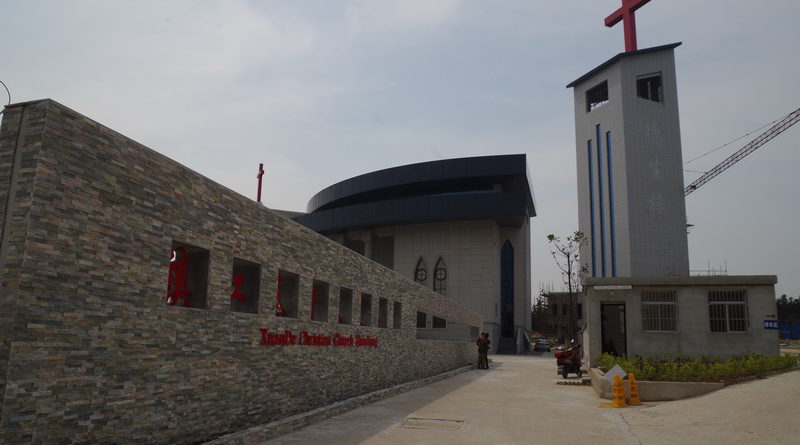Zhenjiang Memorial to Hudson Taylor
Dr James Hudson Taylor was a world-famous personality in the early modern period of contacts between China and Western nations. In my travels to China, I’ve attempted to explore sites and memorials for people like Taylor. As one of many Western missionaries to China during colonial times, he had an influence not popularly recognized today. Highly motivated by religious idealism, Hudson Taylor and many like him had a purpose and commitment quite different from the traders and other foreigners in China in the late 1800s. This article and related photo sets describe my visits to the area where Taylor, his family, and other associates located their home base for much of his 50 years in China.
Zhenjiang and Yangzhou are major cities located on opposite sides of the Yangtze River (known still by Chinese as the Changjiang). Intersecting the river at this point is the great inland waterway known a the Grand Canal. Construction was first started in this area almost 1500 years ago. In succeeding centuries, emperors extended it until Beijing was effectively linked (about 600AD) by this inland waterway with the productive agricalural area of southeast China. This location was an ideal base for Taylor and his operations with the China Inland Mission which he had founded in 1865. His wife, Maria, was buried here in 1870 (age 33). Hudson Taylor died in China and was buried here also with Maria in 1905.
I was here to track down a church that was known to house some memorials to Taylor. But being somewhat misdirected, I was directed to a new church building not yet fully completed. It was a visit of significance, however, since my visit coincided with the first Sunday of worship in the new Xuande Church building.
A year later I returned (again, with the generous assistance of a professor friend from Nanjing). This time we located the little church that I had searched for the first time. Here, on a tree-lined street not far from the historic center of Zhenjiang, we found a number of artifacts safely secured and displayed at the Daxi Road Gospel Church. It was located just a few blocks from early colonial buildings, now preserved as an extension of a massive new museum, that marked the early era of foreign trade.
But this time (2015), we returned again to the new Xuande Church building, and noted the progress being made to the grounds, and especially the bell tower topped now by a soaring cross high at its top. We gained access again to the new church site, and learned more about the crypt being built into the base of the tower. We learned it was to honor the Taylors and possibly other early missionaries. (For photos, see links provided below.)
On my final visit, March, 2016, I was able again to record the progress of construction and to learn that The beautiful new bell tower would be known as the “Hudson Tower.”
Taylor was responsible for recruiting more than 800 missionaries to China over a 50 year period and his China Inland Mission recruited more than 1300 overall. At his death in China in 1905, his body was returned to Zhenjiang where he was laid to rest next to that of his first wife, Maria. For many years this foreign cemetery area was overbuilt, but was cleared for new construction in 2013 at which time the graves were again located and the remains of the Taylors and others were removed for burial elsewhere.
The new Xuande church in Zhenjiang is a lovely site to memorialize the life and work of Dr James Hudson Taylor.
Related photos and articles:
-
Album: Visit of 2014, first visit to the new Xuan De Church in Zhenjiang
Album: Visit of 2015, first visit to old Daxi Road Church in Zhenjiang
Album: Visit of 2015, showing development of Xuan De Church.
Article: A Brief History of Dr James Hudson Taylor
First published: 2016/07/14
Latest revision: 2020/04/07
